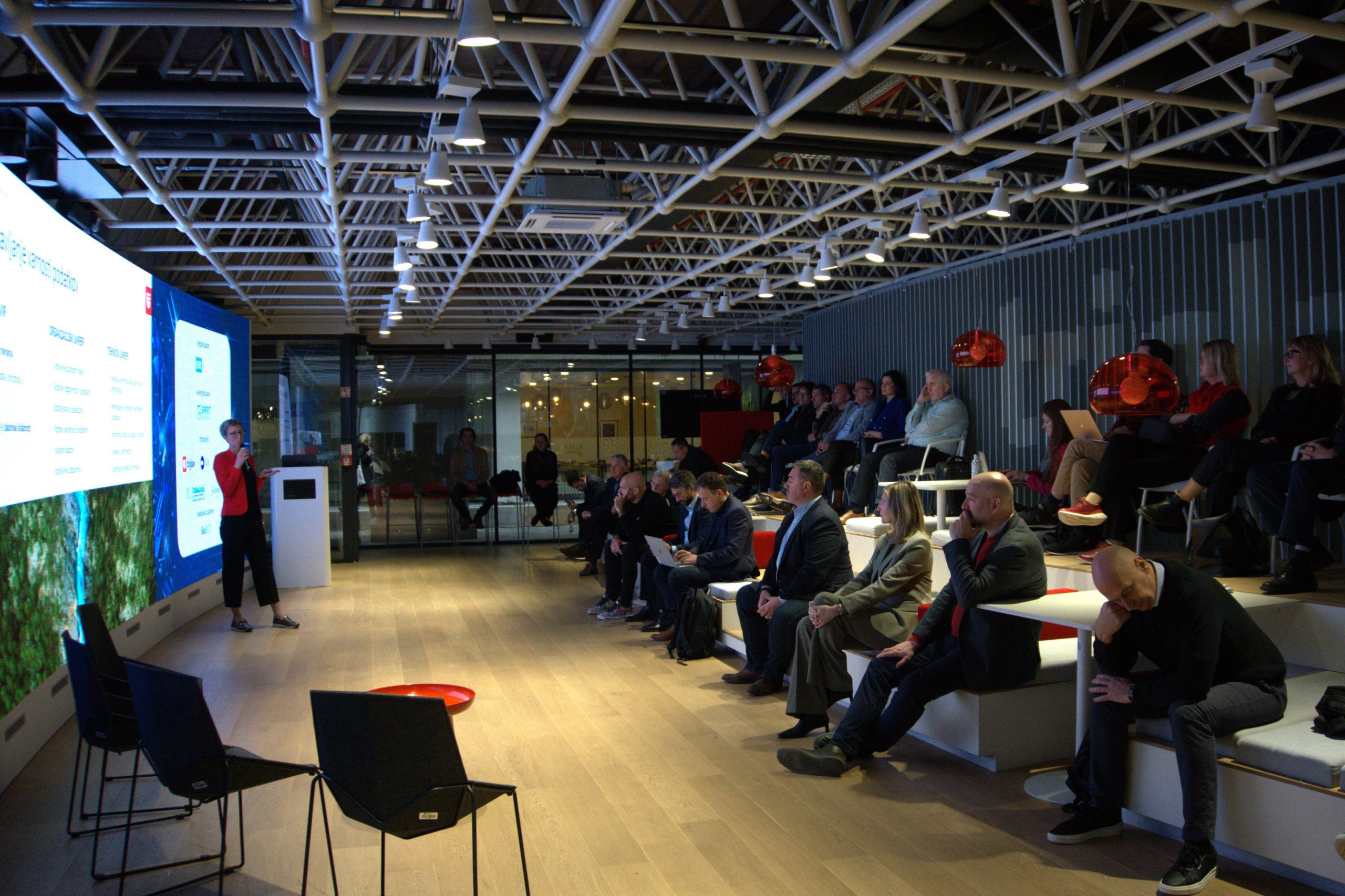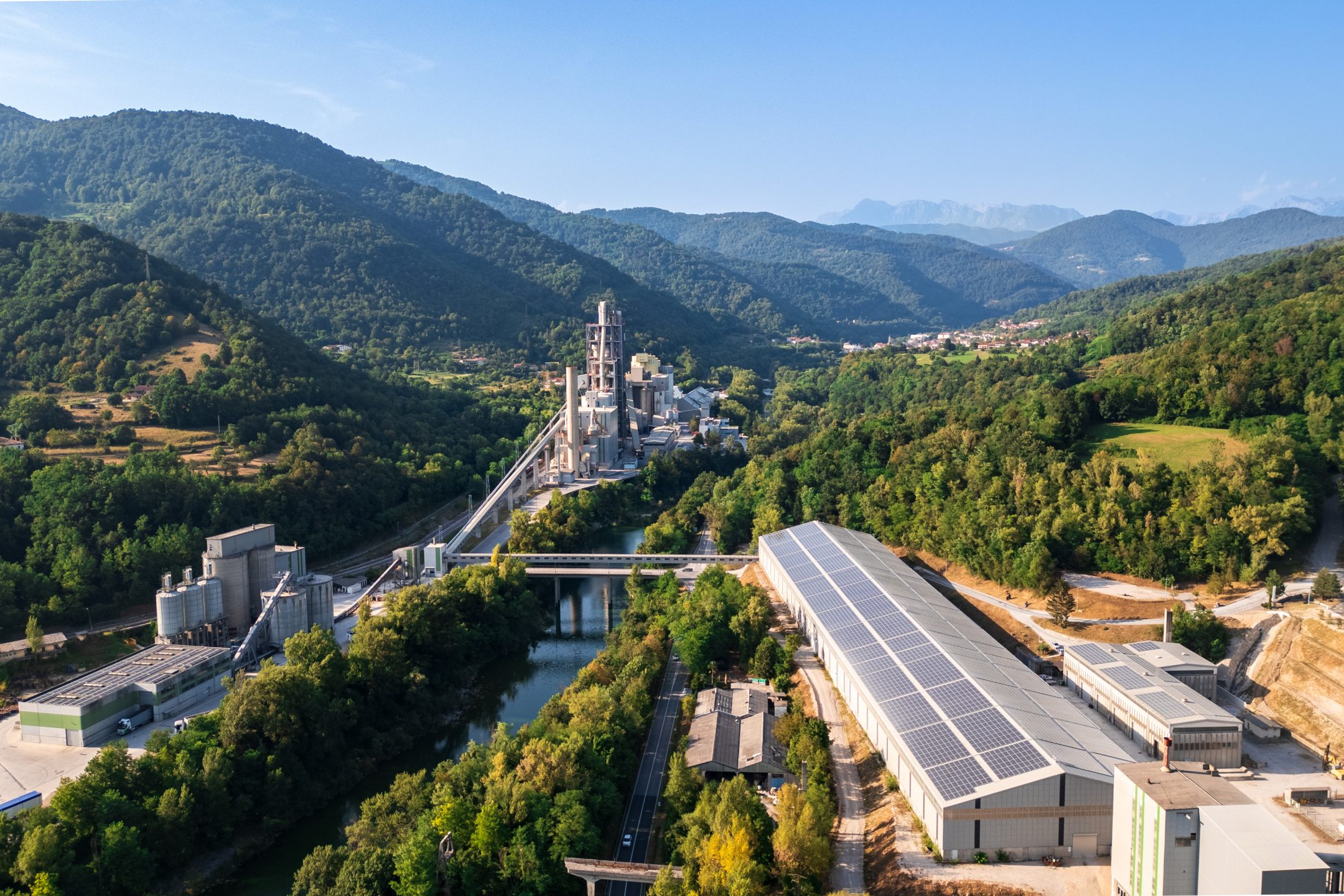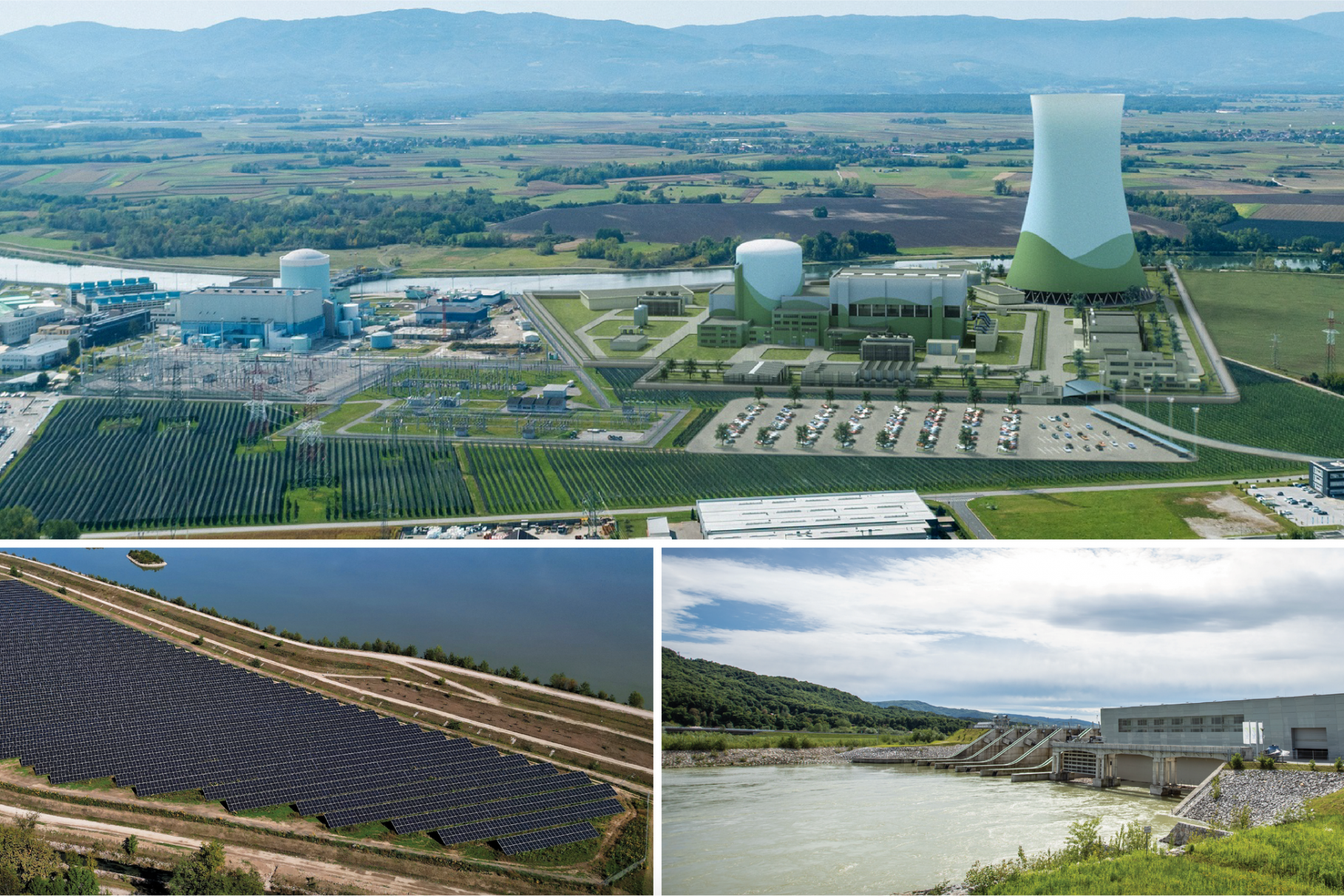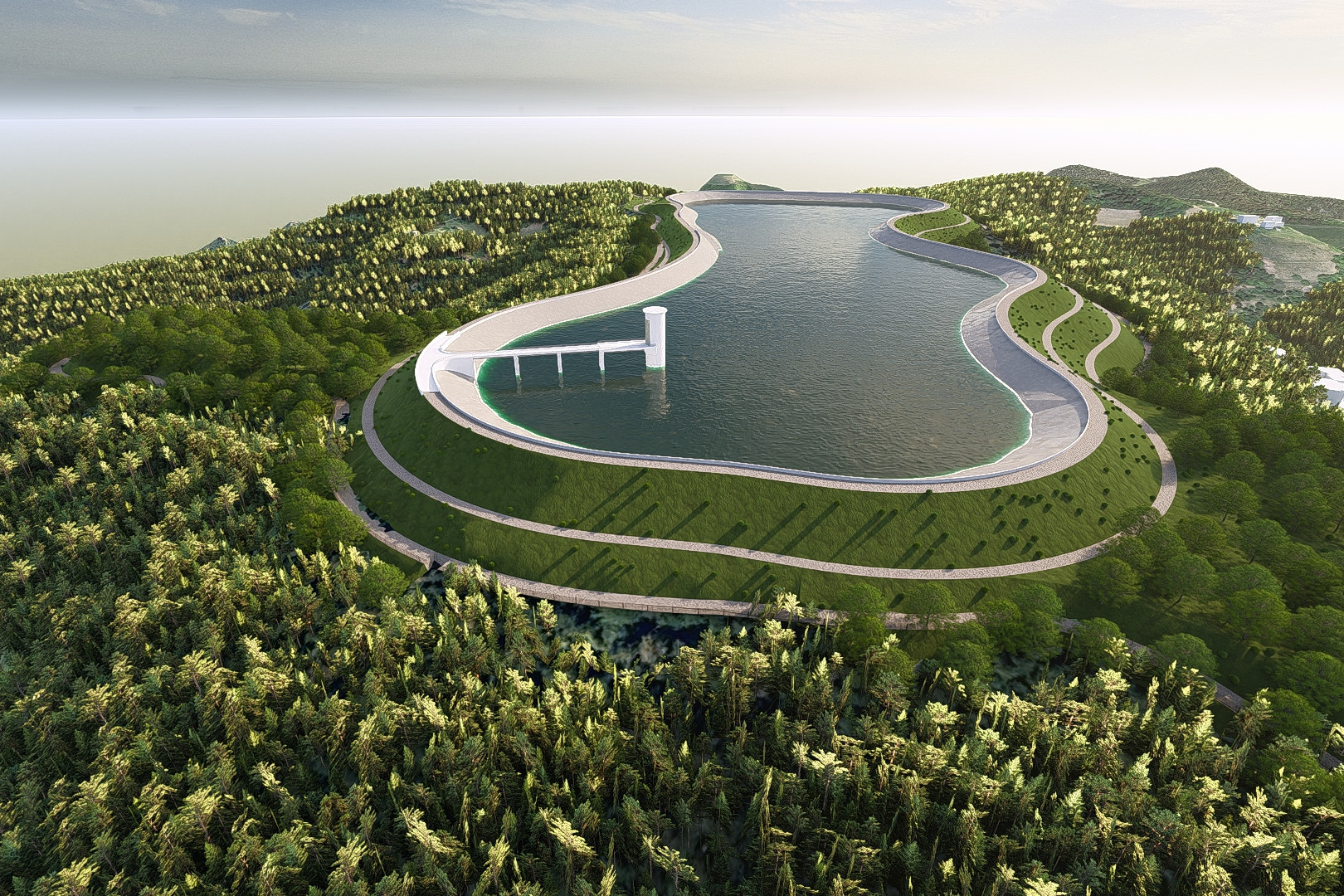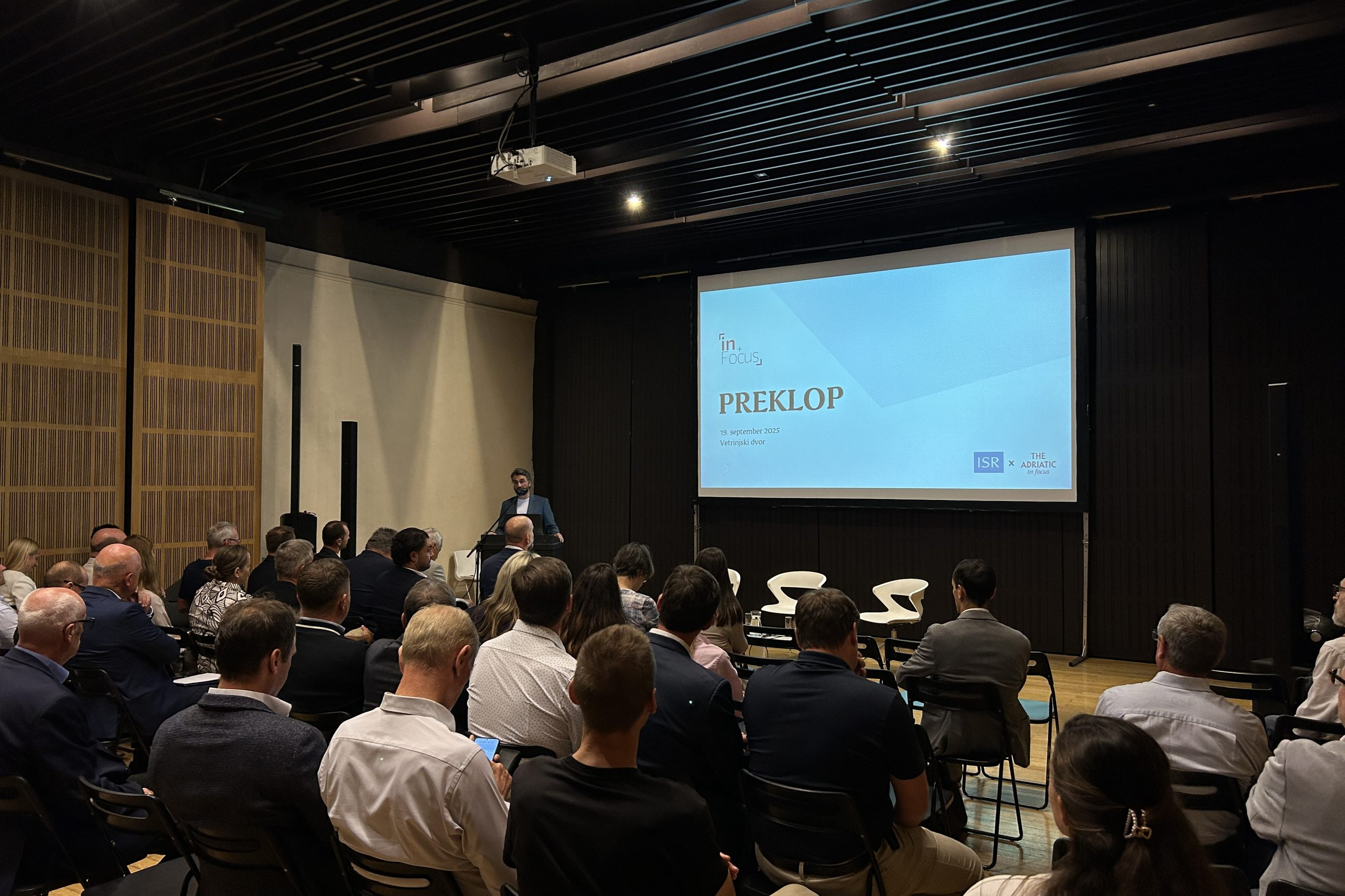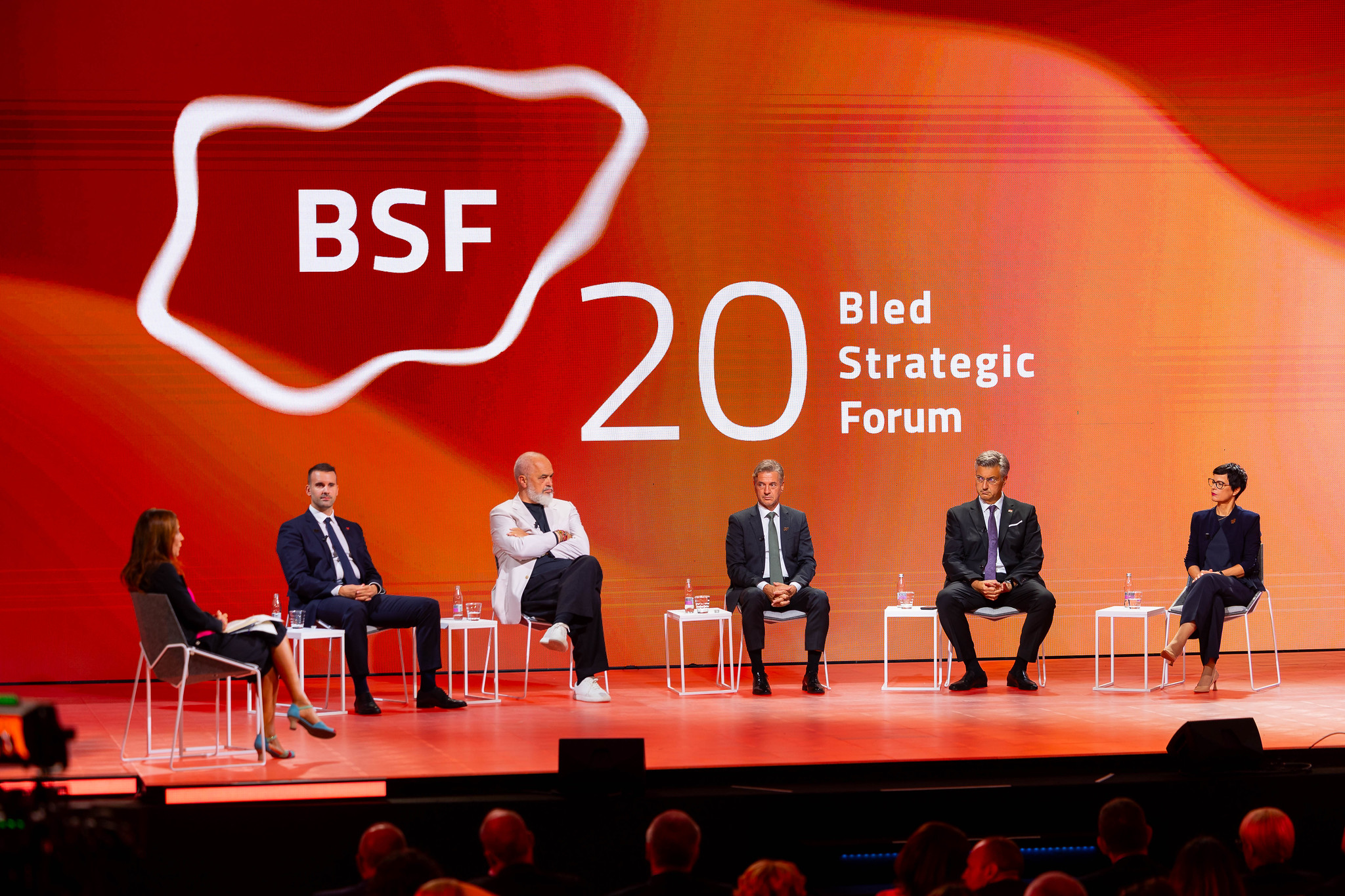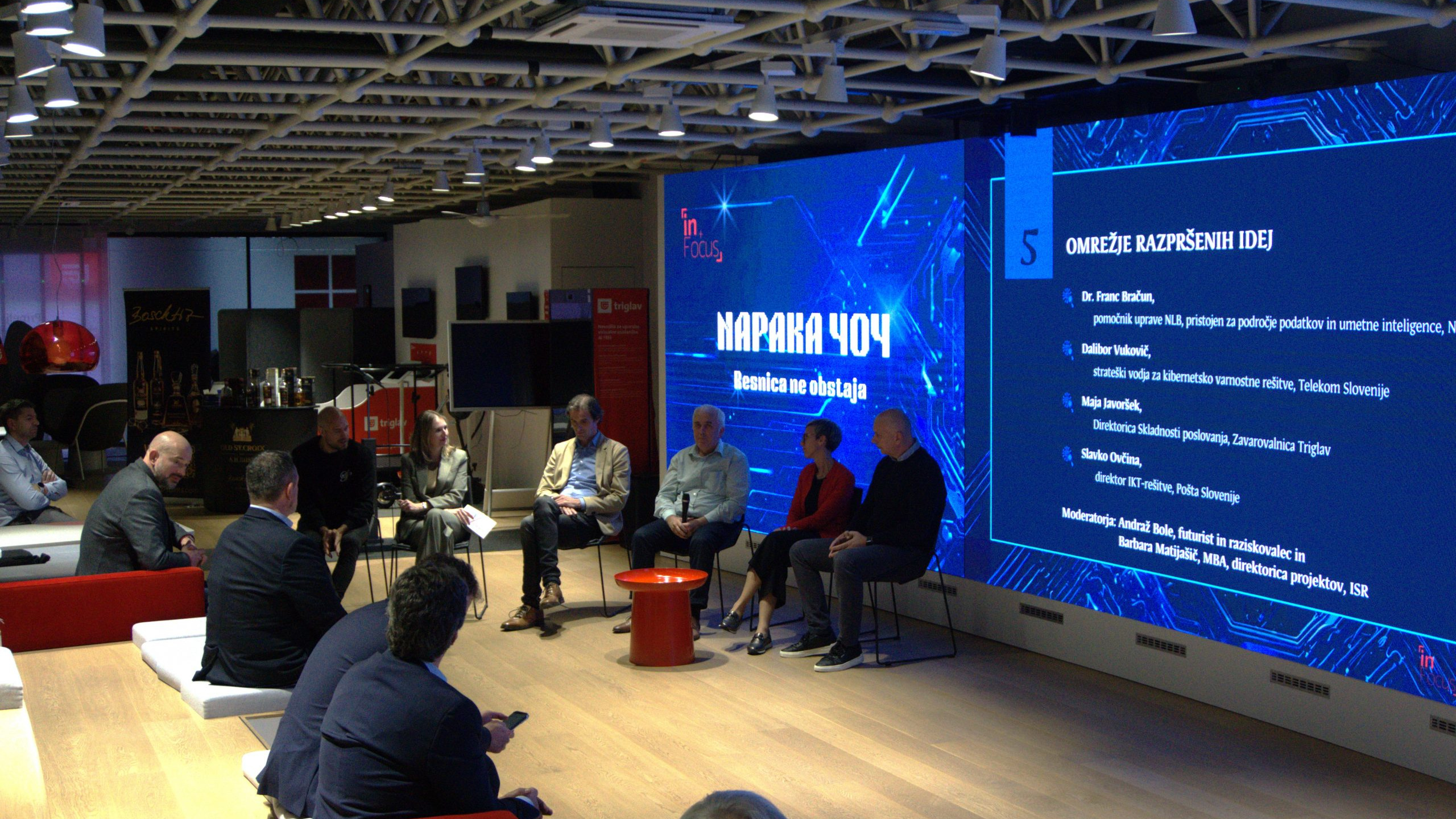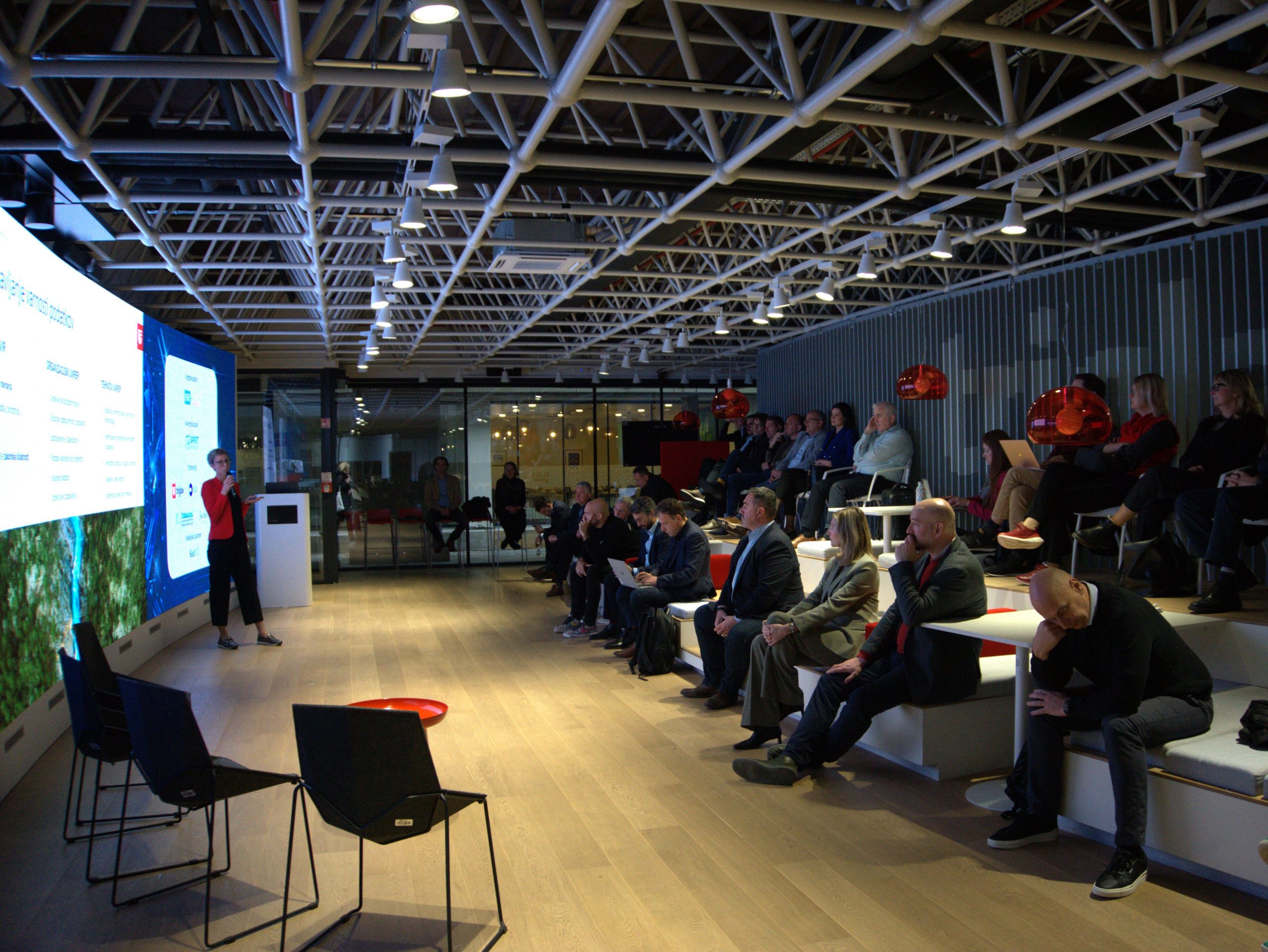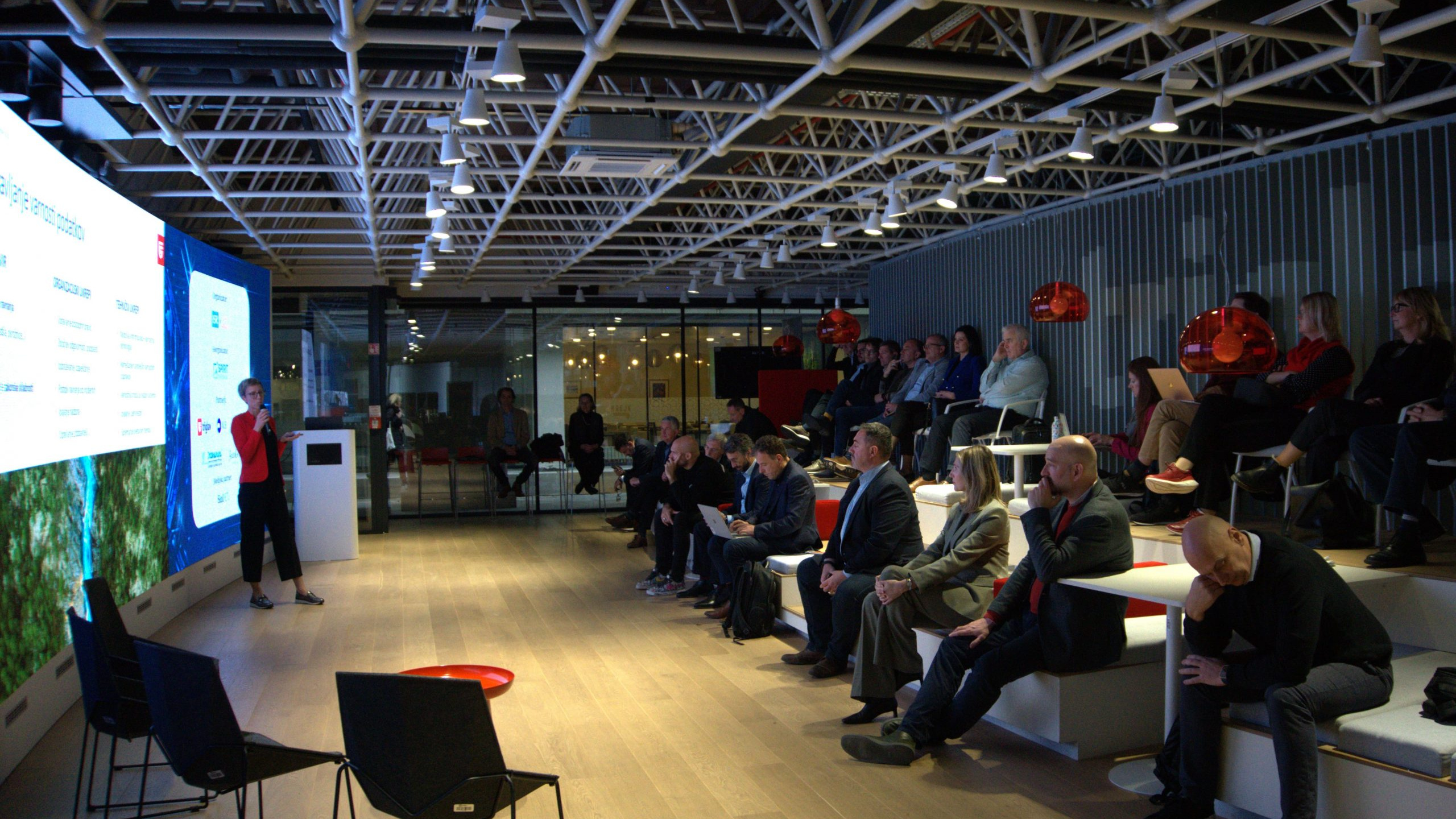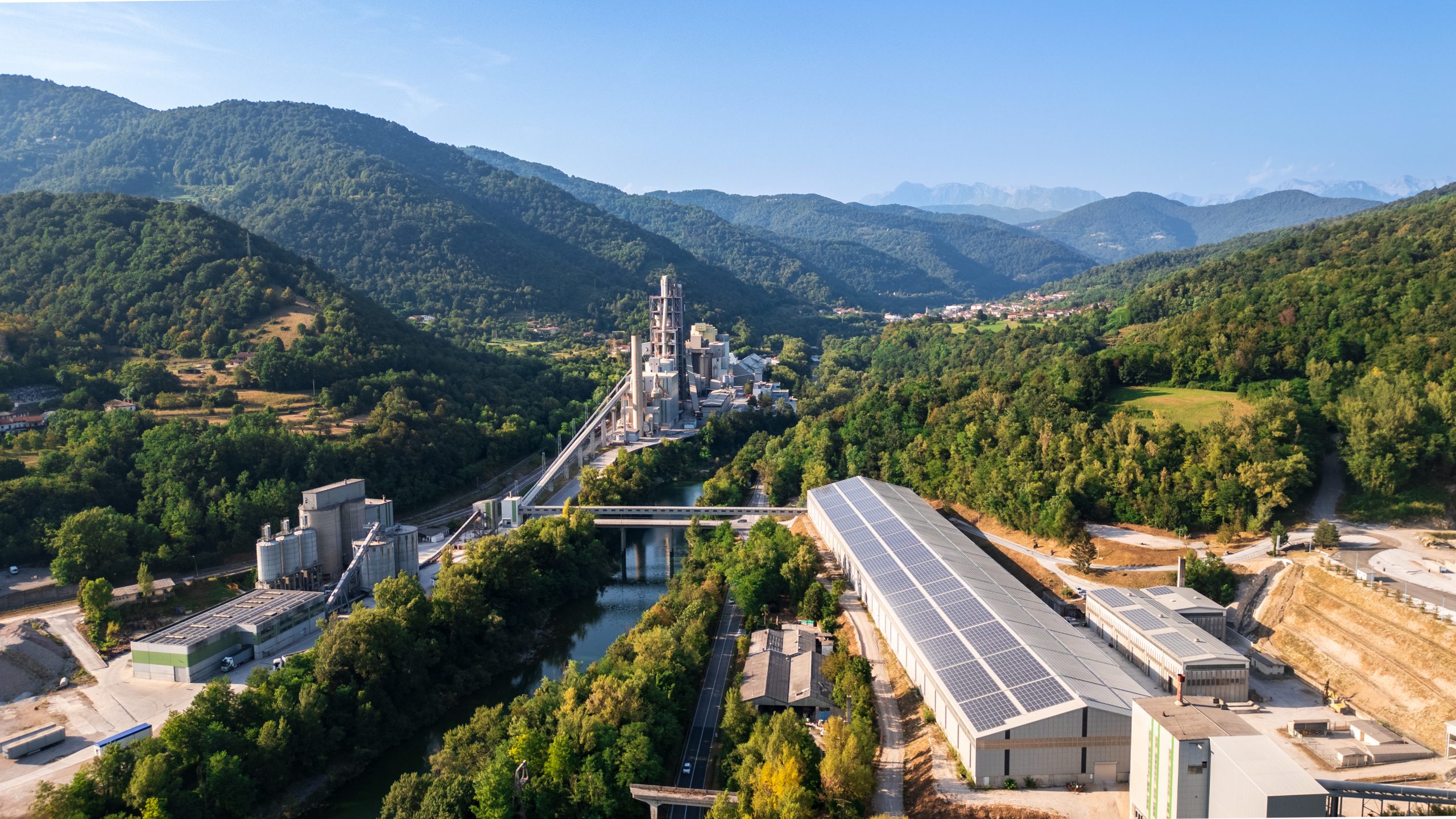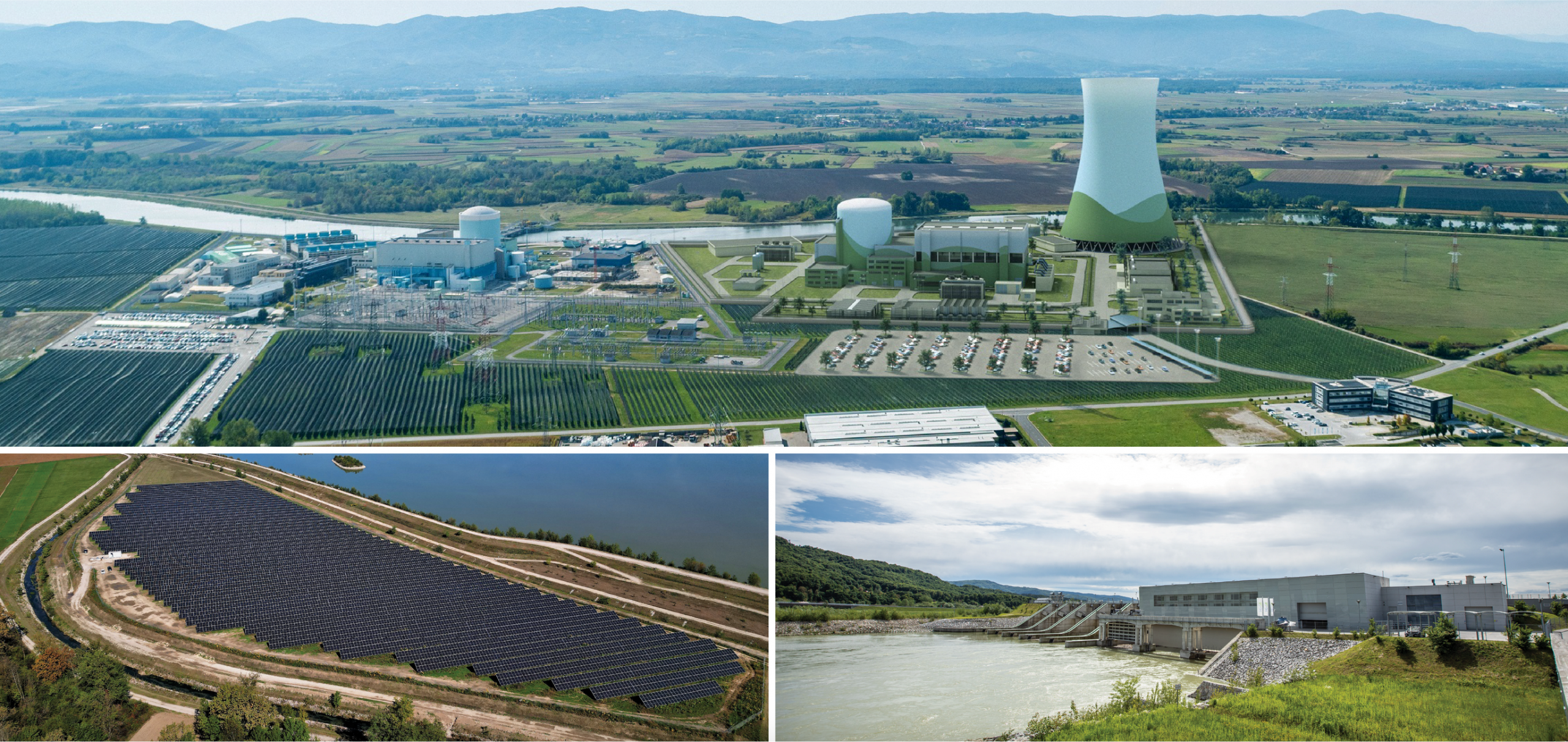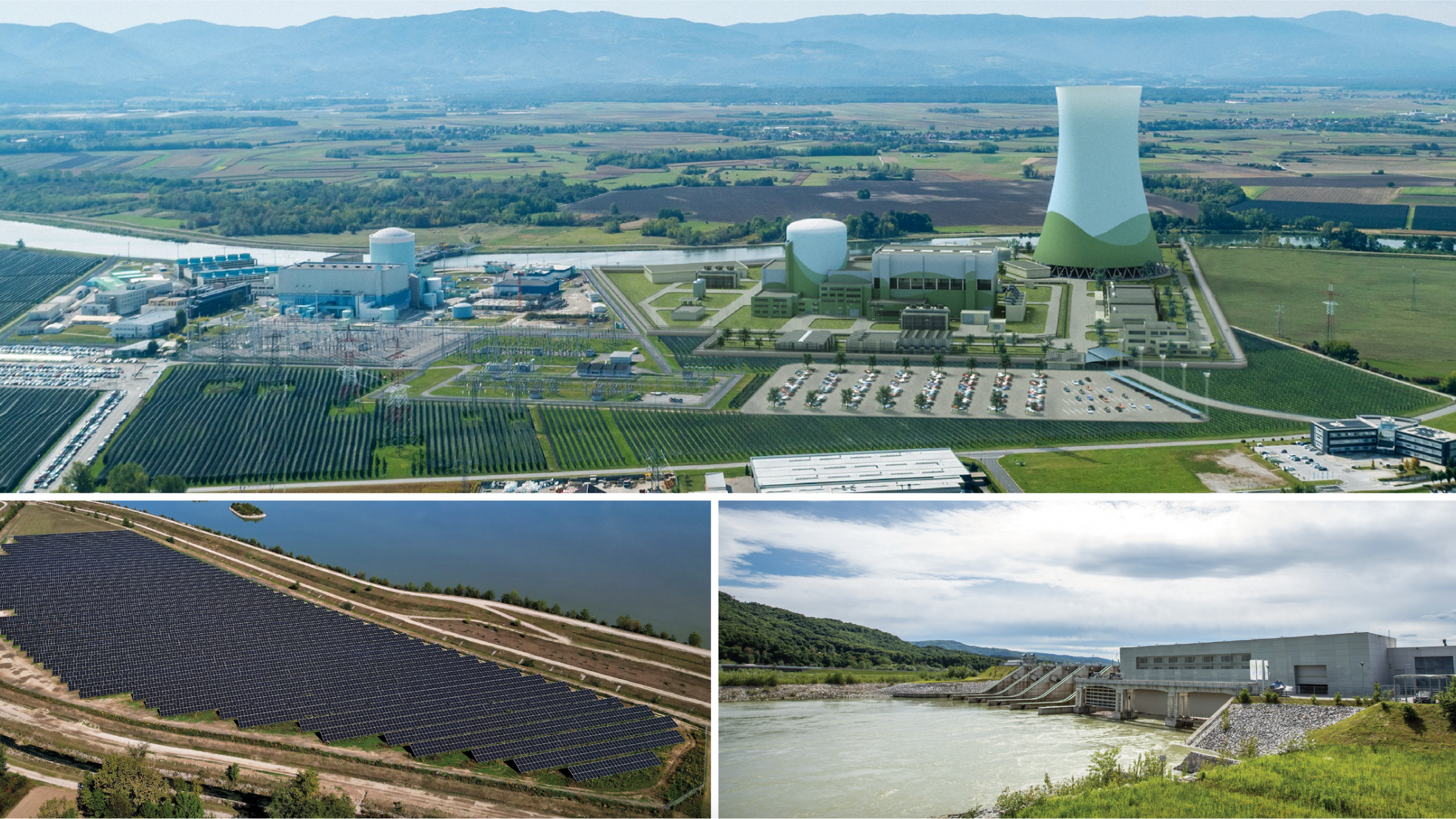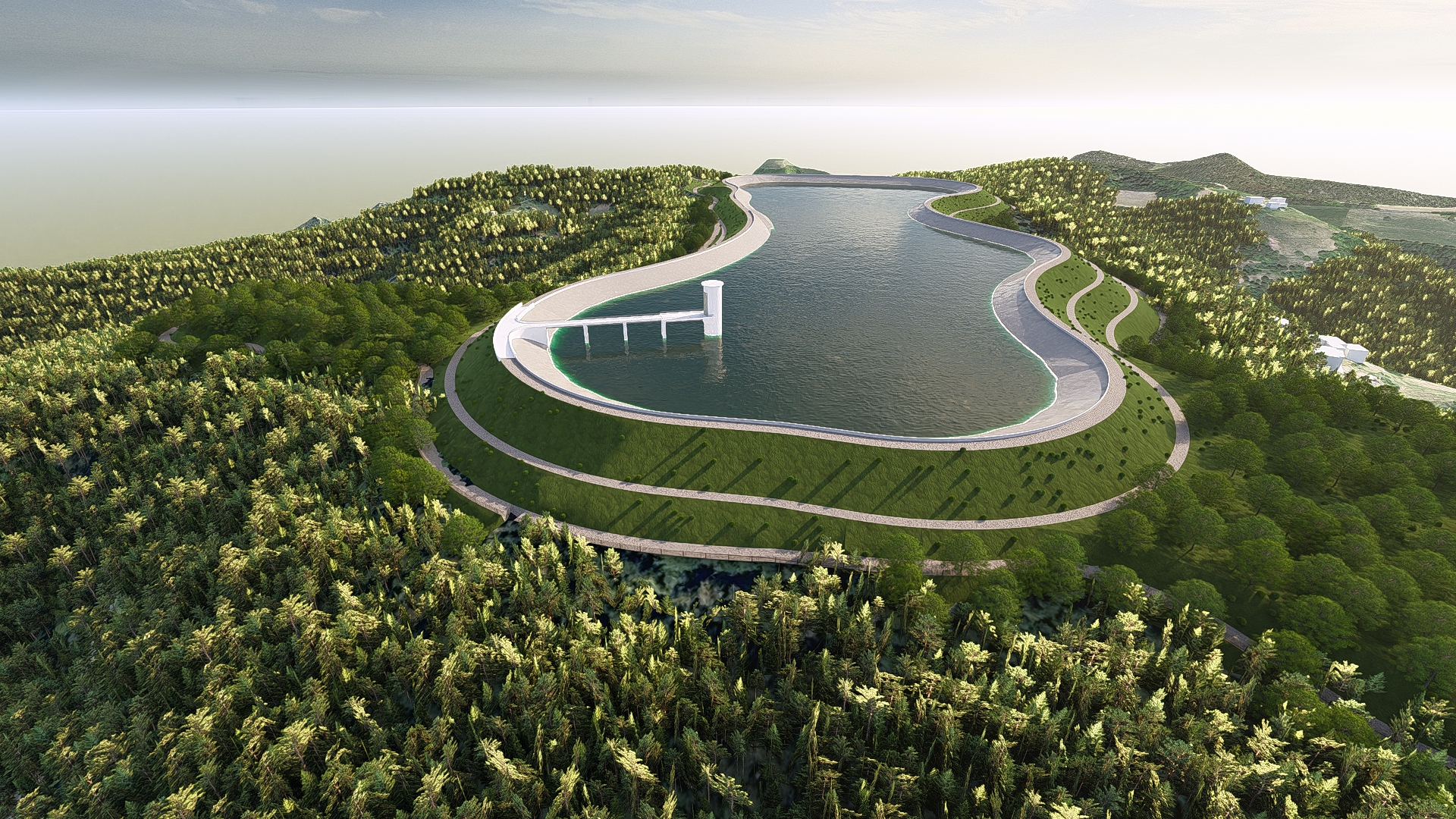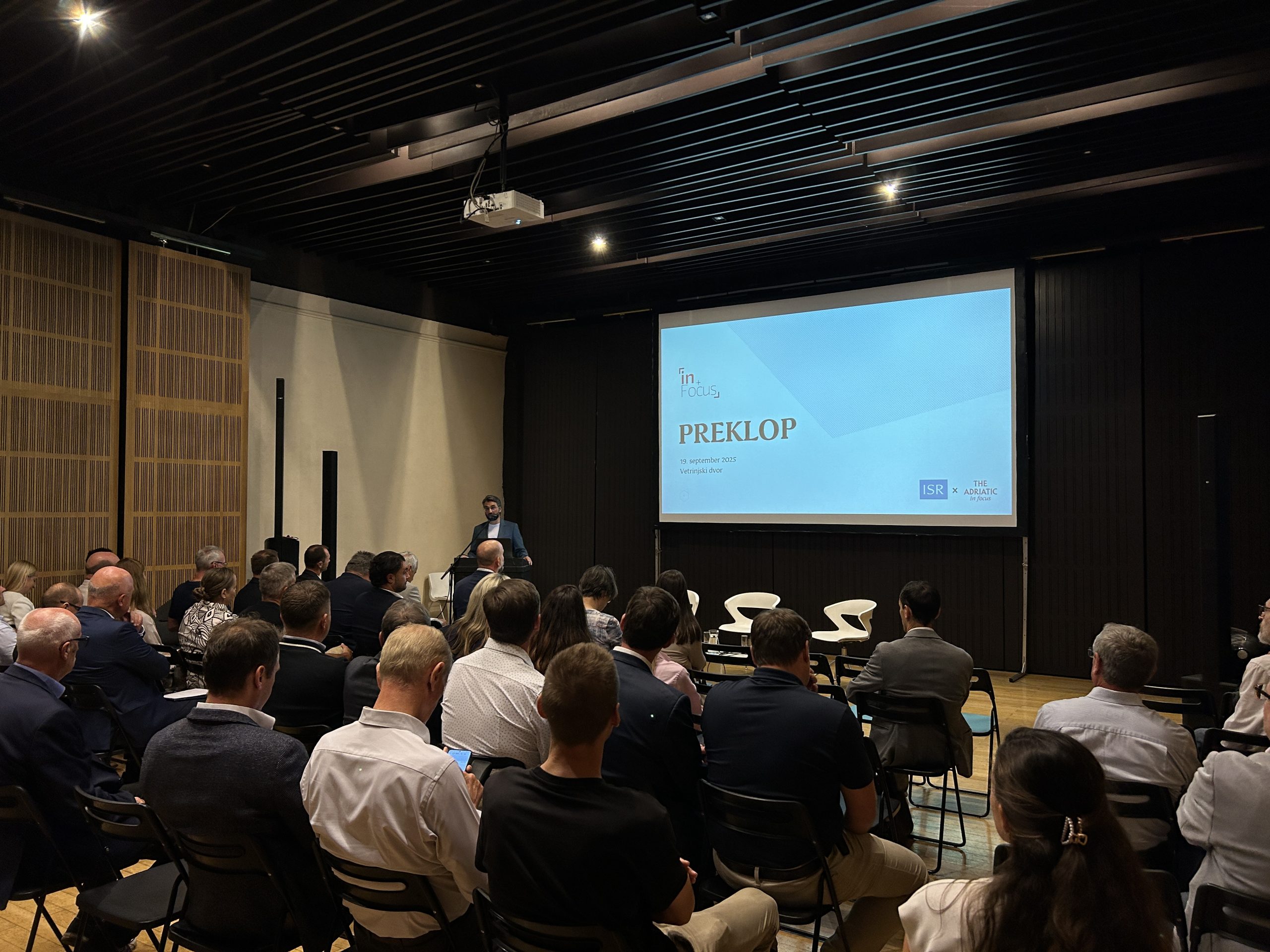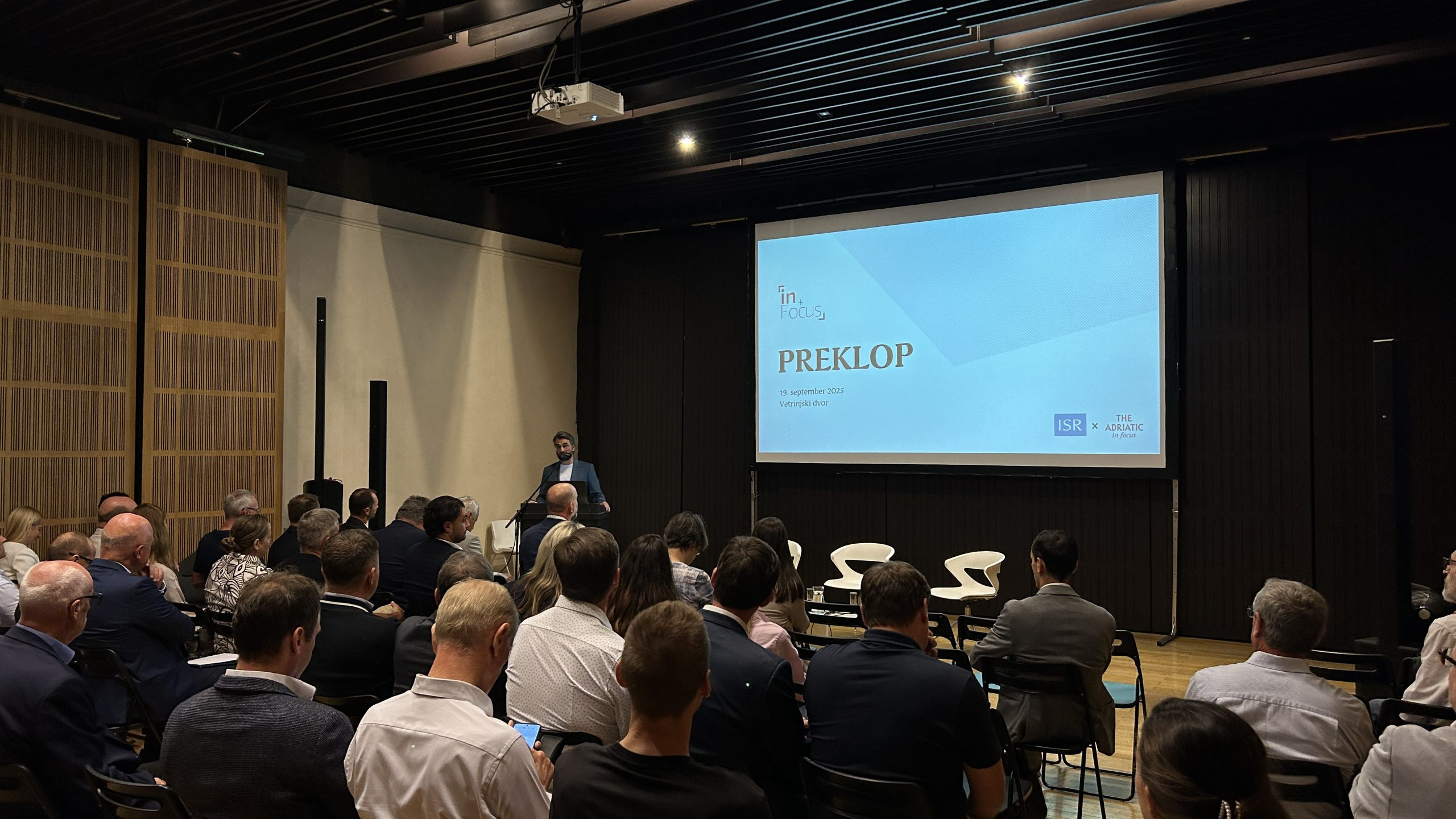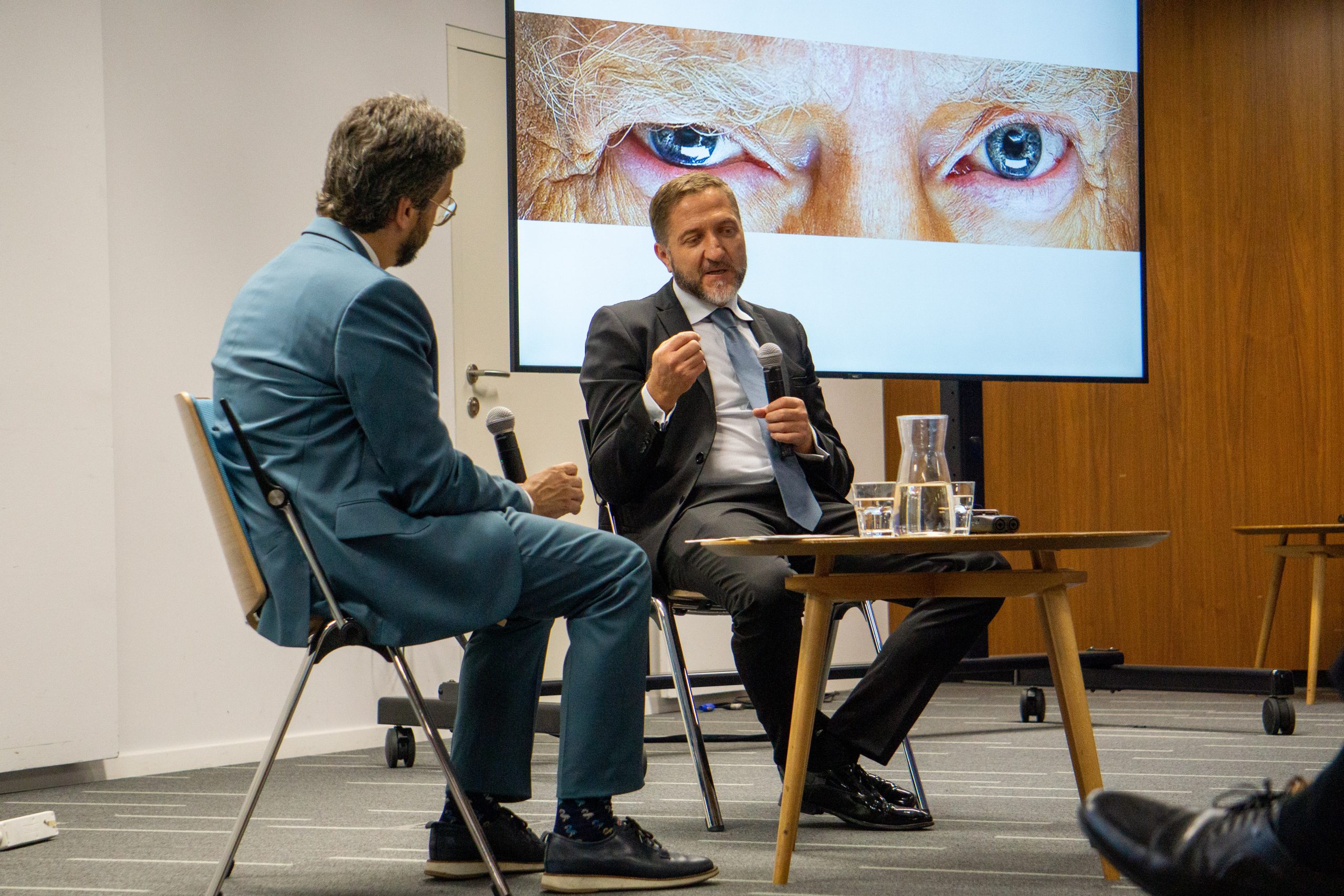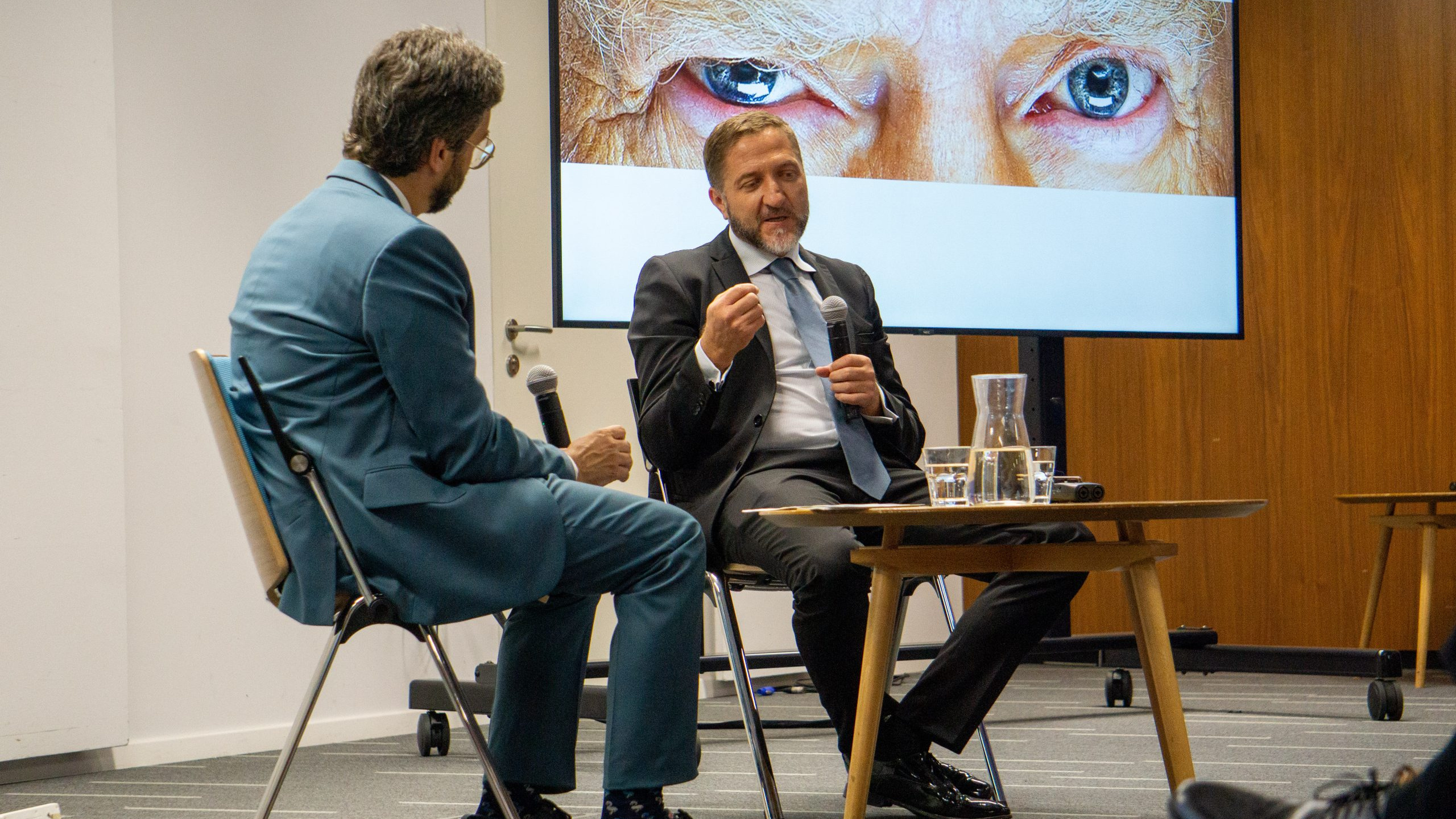Can Slovenia stay ahead in the cyber arms race?
editor
As artificial intelligence gains the power to generate lifelike videos of executives or mimic co-workers’ voices to authorise urgent transfers, the challenge of protecting even the most basic digital interactions has never been more daunting.
The Adriatic Team
Generative AI is transforming cyber-attack capabilities in 2025, allowing criminals to automate and scale operations with unprecedented sophistication. Tools once reserved for seasoned hackers now help even modestly skilled actors probe system weaknesses, refine phishing lures and generate deepfake scams, dramatically widening the attack surface.
The weakest link is also the strongest
AI makes it trivially easy for attackers to fabricate credible identities and manipulate employees. The human element, long the weakest link, has thus become the main theatre of cyber war. Analysts reckon that human error, whether born of ignorance or inattention, lies behind roughly a fifth of all security incidents. Yet individuals are also an organisation’s most potent defensive asset.
How to reinforce that line? Technology alone will not suffice. Knowledge has become the truest antivirus. Understanding how attackers operate, spotting the tell-tale signs of social engineering and recognising deepfake trickery allows users to thwart most attacks before they cause damage. This must be backed by strict organisational policies: identity checks for unusual requests, unwavering use of multifactor authentication and regular updates of security protocols are the hygiene necessities of the digital era.
5G and AI
The same AI powering ever more refined attacks has become indispensable to defenders. Leading Slovenian operators, including Telekom Slovenije, the country’s largest telecoms provider, use it to design more resilient networks and detect suspicious patterns in real time. Historically, cyber-attacks required considerable expertise and manual effort – today AI has lowered entry barriers even as it strengthens some defences. The technology itself is neutral, but its effect depends on who wields it.
So it goes with 5G. As the network expands, soon expected to blanket nearly all of Slovenia, with Telekom already covering almost the entire population, the ecosystem grows more complex. Yet 5G also enables new layers of security. Smart, responsive networks with protections baked into their core let firms build bespoke private networks tailored to their risk profile.
To manage these risks, infrastructure providers have built round-the-clock cyber-security centres. Increasingly, security is shifting away from users’ devices and deeper into the network. Safe Web, a service from Telekom used by more than 150,000 subscribers, blocks malicious content before it reaches the user.
Slovenia’s advantage
Data from ENISA, the EU’s cyber-security agency, suggest that Slovenia ranks among the bloc’s more digitally secure members. It isn’t starting from scratch. The country boasts the highest number of AI researchers per head in the EU, strong internet infrastructure and extensive e-government services. Its innovation, however, remains concentrated in pockets of the economy, often within the domestic operations of multinationals. The challenge is diffusion rather than capability.
Still, Slovenia has long recognised that technological sophistication matters for economic performance. It has updated its research and innovation policies and nudged its Digital Economy and Society Index ranking to 13th by 2024, a sign of sustained investment in digital infrastructure and services.
But Slovenia’s favourable position is hardly assured. Collaboration among national operators, government bodies and private firms is becoming crucial. Only by sharing information on threats in real time can the country detect and thwart attacks effectively. Digital security is not a destination but a perpetual process of adaptation. An endless race against ever more inventive adversaries.
Who would dare board a plane piloted by artificial intelligence?
editor
At the event 404 Error: Truth Does Not Exist, organised by the Institute for Strategic Solutions and hosted at Triglav Lab, speakers discussed how to distinguish reality from disinformation and manipulation at a time when technology is advancing at an astonishing pace — and what role companies in the financial, healthcare, logistics and telecommunications sectors can play in strengthening trust in data and its security.
The Adriatic Team
“Across all levels of society we need to reflect on the consequences of extremely rapid technological development. Social change happens faster than it appears, which is why continuous learning, understanding technology and thinking about reskilling and upskilling the workforce are essential. Regulators and politicians are often incompetent and unaware of what is really happening, so they fail to adopt adequate measures. The rise of artificial intelligence will likely catch them off guard,” stressed AI expert Marko Grobelnik.
According to Tine Kračun, Director of the Institute for Strategic Solutions (ISR), which organised the event, it is crucial — in an era when technologies can convincingly imitate a person’s voice, face or writing style and blur the line between truth and fabrication — to establish mechanisms that help identify real information and distinguish it from disinformation.
Dr Jure Stojan, Partner and Director of Research and Development at ISR, said history teaches us two important lessons about modern technologies. First, we can anticipate which human needs a new technology will try to satisfy, but we cannot even begin to predict the form it will take. And second, we can predict how human shortcomings will manifest whenever new technologies are introduced. “Every technology that was expected to ease human work — the very promise under which it was marketed — ended up creating even more work for people,” Dr Stojan noted.
We cannot reduce truth to a collection of isolated facts, because facts without context create no meaning. True understanding only emerges through reflection, connection and interpretation, explained futurist and researcher Andraž Bole. At the core of so-called cognitive resilience is the ability for analytical and systemic thinking. Instead of accepting information at face value, we should break problems down to first principles, recognise relationships between phenomena and distinguish what is essential from what is not, Bole emphasised.
If we are not fast enough, technology will decide for us
Professor Marko Grobelnik of the Jožef Stefan Institute’s AI Laboratory warns that artificial intelligence is still too often seen as an enhanced version of existing tools, when in fact it is creating an entirely new social and technological reality. Its exponential growth is rapidly reshaping fields ranging from labour markets to the information landscape. The newest models, such as Gemini 3, GPT-5.1 and Grok 4.1, and the deployment of autonomous taxis like Waymo, are already replacing entire professions. At the same time, the traditional idea of work as the basis of livelihood is collapsing, and shared social reality is fragmenting under the pressure of information bubbles, deepfakes and synthetic propaganda.
Society will need to redefine the value of human beings, the responsibilities of autonomous systems and the infrastructure of truth — otherwise technology itself will shape social consensus, for the benefit of only a few. Grobelnik stresses that a thoughtful social response, education about technology and accelerated reskilling are all essential. Regulators and politicians are generally lagging behind and will likely be surprised by the changes AI brings.
Humans in a dual role
Maja Javoršek, Director of Compliance at Zavarovalnica Triglav, underlined that in the insurance sector, data is the foundation of business, legality and trust — yet most incidents are caused by people. Despite technical protections, mistakes arise from carelessness, weak passwords, curiosity or ignoring warnings. Statistics show that human error accounts for 95% of security incidents and two-thirds of data-security breaches. Yet people are also the strongest defence. Regular training, awareness-raising, attack simulations and clear, simple rules significantly reduce risks. What is essential is a security culture that combines technology and psychology: employees must understand their responsibility and the impact of their actions. The key message remains: humans are both the biggest risk and the most important defender — the difference lies in knowledge, attention and responsible behaviour.
Cyber attacks evolve faster than defence
Dalibor Vukovič, Strategic Lead for Cybersecurity Solutions at Telekom Slovenije, presented the example of a night-time attack on a Slovenian manufacturing company. Attackers used stolen data to enter the internal network, but a fast and professionally executed response limited the attack to just seven minutes and prevented millions in potential damage. Cyber threats, Vukovič said, most often occur at night or during holidays. Visibility over network activity is crucial; without it, companies often fail to detect an attack at all. Cybersecurity is only effective when it has management support and when defence teams think as dynamically as the attackers. “Attackers advance far more quickly than defensive technologies. Cyber protection is not a passing trend — it is something we genuinely need. This also applies to mobile phones, where without advanced protection we are extremely vulnerable,” Vukovič warned.
Who would dare get on a plane piloted by AI?
“Artificial intelligence acts like a crutch for our minds — it makes us limp a little all the time. Critical thinking and cultivating a healthy sense of doubt must therefore become part of our daily behaviour. Assigning responsibility is crucial. Give people the tools, knowledge and skills they need, but also make them accountable. People must understand they are responsible for the outcomes of their work,” stressed Maja Javoršek.
Dr Franc Bračun, Management Board Adviser at NLB responsible for data and artificial intelligence, said that in the bank’s experience, people — especially in recent times — place too much trust in technology. A growing challenge, he noted, is protecting against attacks on identity. The prerequisite for security is systemic protection. Defence against risk must be built on strong technical measures. Another important principle is that all critical decisions should be made by humans, not AI. “Who today would dare get on a plane that is flown not by a human, but by a machine?” he asked. The third key measure is education, which is essential for building resilience — a priority focus at NLB.
How AI became part of the team
Slavko Ovčina, Director of ICT Solutions at Pošta Slovenije, described the example of Pia, a voice assistant that understands all Slovenian dialects and is built on the latest advances in artificial intelligence. Pia enables customers of Pošta Slovenije to speak naturally in Slovenian, ensures fast and effective communication nationwide, improves user experience, shortens response times and sets new standards in digital communication. “If, during development, we had fully realised all the risks associated with AI, Pia probably would not exist today. We optimised her gradually along the way. People accepted Pia as part of the team, and thanks to her we have improved and shortened numerous processes,” Ovčina said.
People are central to cyber defence
editor
At a conference organised last week by the Institute for Strategic Solutions (ISR), Error 404: Truth does not exist, and hosted at Triglav Lab, Maja Javoršek from Zavarovalnica Triglav discussed the increasingly important role of people in safeguarding data and preventing cyber incidents across the financial and insurance sectors.
The Adriatic Team
Speaking about broader industry trends, she noted that human behaviour remains one of the key variables in cybersecurity everywhere—not just in insurance and not specifically at Triglav. “Across sectors, many security incidents involve an element of human error,” she said, emphasising that this reflects normal workplace pressures rather than intentional misuse. These errors typically arise because people work quickly, multitask or encounter unfamiliar digital threats, and they are observed in organisations of all sizes.
Javoršek stressed that the insurance industry’s reliance on data makes awareness especially important. More than 5.000 employees in Triglav, handle a wide spectrum of information governed by strict legal frameworks, including GDPR, sectoral regulations and internal compliance standards. “Insurance depends on trust, and trust depends on responsible data management,” she told the ISR audience.
In describing Triglav’s approach, she highlighted that the company uses well-established technical, legal and organisational safeguards such as regular patching, monitoring tools, penetration testing and global threat analysis. But she also pointed out that technology alone cannot eliminate risk if users are not prepared for the kinds of tactics attackers employ.
Building practical readiness
For this reason, Triglav focuses strongly on awareness and preparedness. Employees receive ongoing training, internal communication and visual reminders about safe digital practices. The company also conducts simulated phishing and social-engineering exercises to help staff recognise and respond to real-world attack patterns. “The purpose is not to expose individuals,” Javoršek explained, “but to strengthen practical readiness and make the right response feel natural.”
Her remarks also addressed the wider Slovenian context. Data from SI-CERT shows that reported cyber incidents have increased by more than a third between 2020 and 2024, affecting not only large enterprises but also smaller organisations that often have more limited resources dedicated to cybersecurity. To support these organisations, Triglav offers Cyber Protection Insurance, which provides expert assistance, forensic analysis, legal and reputational support, data restoration and coverage for business interruption or extortion attempts.
Javoršek emphasised that while prevention remains essential, handling the aftermath of an incident is equally important. “When an attack occurs, the quality of the response has a major impact on how quickly an organisation can regain stability,” she said.
She emphasised that cybersecurity is a shared responsibility: technology, governance and individual awareness must all work together. In her words, “Secure systems don’t depend only on tools, they also depend on people who understand the value of the information they work with.”
Alpacem Cement targets energy efficiency amid Slovenia’s broader transition
editor
Cement production is among the most energy-intensive industrial processes, consuming vast amounts of heat and electricity from quarry to kiln. For Alpacem Cement, d.d., Slovenia’s leading cement producer, improving energy efficiency has become both an operational and strategic priority.
The Adriatic Team
The company reports an annual electricity consumption of around 130 GWh, comparable to that of a small town. To better manage this, Alpacem has introduced an Energy Management System (EMS), providing a detailed overview of energy use across the plant and allowing tighter control of costs and performance.
In parallel, the firm has upgraded its SCADA system for heating and cooling control, enabling more precise regulation and improved efficiency. It is also expanding its use of renewables: its installed solar capacity now totals 3.72 MW, generating about 3,700 MWh of green electricity per year and cutting emissions by roughly 1,682 tons of CO₂. Plans are underway to add another 15 MW of capacity on the industrial site within the next three years.
Beyond renewables, Alpacem is examining waste-heat recovery options for both process heating and electricity generation using an Organic Rankine Cycle (ORC) system.
Lower emissions
Energy efficiency forms a core part of the company’s decarbonisation strategy, which also includes reducing clinker content – the most energy-demanding component of cement – to an average of 72 %, below the European average of around 75 %. The company is also increasing the use of recycled mineral raw materials and alternative fuels, in line with circular-economy principles.
Alpacem is further engaging in carbon-capture, utilisation and storage (CCUS) research, preparing feasibility studies and project documentation for future technology implementation and EU funding opportunities.
“The future of energy self-sufficiency and the transition to a low-carbon economy depend on close cooperation between industry, science, and policymakers,” said Dr Tomaž Vuk, President of the Management Board of Alpacem Cement. “Only coordinated action can deliver effective systemic solutions. For energy-intensive industries such as cement production, a strengthened and predictable regulatory framework is essential – one that promotes the circular economy, the use of secondary raw materials, and provides effective support mechanisms at the national level.”
Alpacem’s activities come at a time when Slovenia’s energy landscape is shifting. According to the Statistical Office, renewables accounted for about 25 % of gross final energy consumption in 2023, while national policies increasingly promote industrial energy efficiency, digital monitoring, and decarbonisation incentives.
As energy costs and regulatory expectations rise, Alpacem’s efficiency programme illustrates how industrial producers are adapting within Slovenia’s evolving energy framework, combining technical upgrades, renewable integration, and circular-economy measures to reduce both costs and emissions.
Spatial planning begins for second Krško nuclear unit
editor
A major step toward expanding Slovenia’s clean-energy capacity is now underway,
as GEN Group and the government move forward with preparations for JEK2, the
planned second unit of the Krško Nuclear Power Plant. The start of the national
spatial planning procedure (DPN) marks the formal beginning of detailed
assessments that will define the project’s location, design, and supporting
infrastructure.
The Adriatic Team
The initiative for the national spatial plan was published on 1 July 2025 by the Ministry of the Environment, Climate and Energy, together with the Ministry of Natural Resources and Spatial Planning. It sets the framework for evaluating spatial, environmental, and technical factors linked to JEK2. The documentation is publicly available on the JEK2 project website and the government portal, with a consultation period open until early autumn.
Key step toward a low-carbon future
JEK2 is the flagship investment of GEN Group, which already generates 99% of its electricity from low-carbon sources. The new nuclear unit, developed alongside renewable projects, will form the backbone of the group’s long-term strategy for climate neutrality and energy independence.
GEN’s strategy rests on three pillars: maintaining a reliable electricity supply, investing in nuclear technologies, and expanding renewable generation from hydro, solar, and wind power. Once operational, JEK2 will further strengthen the nation’s energy stability and affordability, ensuring secure supply for households and businesses.
Investing in knowledge and future generations
In parallel with its energy investments, GEN Group promotes scientific and technical education through the World of Energy visitor centre in Krško. The interactive centre introduces visitors to energy production technologies and the role of sustainable energy in everyday life.
Foundation for the next energy era
The launch of the spatial planning process represents a milestone for JEK2 and for the transition to a modern, low-carbon energy system. Combining nuclear reliability with renewable growth, the project is set to power a cleaner, more resilient future for generations to come.
ČHE Kozjak: Powering Slovenia's green future
editor
Slovenia is moving forward with one of its most important energy projects: the Pumped Storage Hydroelectric Plant (ČHE) Kozjak. Planned by Dravske elektrarne Maribor (DEM), part of the HSE Group, in partnership with the transmission system operator ELES, the project will provide the country with a large-scale energy storage facility designed to support the transition to clean energy, strengthen grid resilience, and reduce dependence on electricity imports.
The Adriatic Team
With an installed capacity of 2 × 220 MW, a gross head of 710 metres, and an upper reservoir of around 3 million cubic metres, PHS Kozjak will be able to store surplus electricity produced by renewable sources such as wind and solar and release it back into the grid when needed. This will help ensure a steady and reliable flow of electricity, balance fluctuations in supply and demand, and support the stable operation of Slovenia’s power system.
The project is included in Slovenia’s Transmission System Development Plan 2023–2032 and in the National Energy and Climate Plan (NECP), underscoring its strategic importance for the country. It also aligns with broader European goals, confirmed by Slovenia’s commitment to the Paris Pledge for Accelerated Development of Pumped Storage Hydropower Plants.
Key benefits of ČHE Kozjak:
-
Energy security and reliability: helps prevent outages by balancing renewable generation.
-
Support for the green transition: enables a higher share of renewables in the system and reduces fossil fuel use and emissions.
-
Lower import dependence: strengthens Slovenia’s energy independence by reducing reliance on foreign electricity.
-
Efficient use of resources: stores surplus production and increases the economic efficiency of the energy system.
Construction will include an upper reservoir at Kolarjev vrh, an underground powerhouse with two reversible pump-turbine units, a transformer cavern, access and service tunnels, a surge tank, and a 400 kV switchyard on the Drava plateau. The facility will be connected to the grid via two 400 kV transmission lines.
The project is supported by extensive environmental studies – over 100 conducted during the national spatial planning phase and more than 70 commissioned for the environmental impact assessment – ensuring that PHS Kozjak will be built to the highest professional, safety, and sustainability standards, with continuous dialogue and cooperation with the local community.
Energy security and green investments take centre stage in Slovenia’s economic debate
editor
Slovenia is facing a moment of reckoning over how it will power its economy in the decades ahead. At a conference convened on Thursday by the Institute for Strategic Solutions (ISR), business leaders and policymakers gathered to debate how the country can seize the opportunities of the energy transition while ensuring long-term competitiveness.
The Adriatic Team
At the heart of the discussion were two voices: ISR director Tine Kračun and Matevž Frangež, state secretary at the Ministry of Economy, Tourism and Sport. Both stressed that Slovenia’s economic future will depend less on cheap labor or tax incentives, and more on targeted investment, renewable energy and an innovation ecosystem capable of turning local ideas into global businesses.
“The pandemic showed us that open markets alone are not enough,” Mr. Kračun said. “Resilience and security have become equally important. Only by ensuring stability and self-sufficiency can Slovenia remain attractive to investors.”
Maribor’s bid to become an energy hub
With ambitions to expand biomass and solar power while building a new data center, Maribor’s mayor, Saša Arsenovič, argued that the city could one day cover its own needs and recycle waste heat to improve efficiency.
“Maribor has the potential to be self-sufficient,” he said. “Our projects show that energy security and innovation can go hand in hand.”
A continental challenge
The Slovenian conversation unfolded against a backdrop of upheaval in Europe’s energy landscape. The war in Ukraine, supply shocks and a global race for critical raw materials have forced the European Union to accelerate its green transition.
Vid Habjan, who oversees investment promotion at SPIRIT Slovenia, framed the stakes bluntly. “Slovenia currently ranks 11th out of 120 countries in energy security. The green transition is no longer a choice — our future depends on diversifying energy sources and launching new initiatives.”
Slovenia as a laboratory of ideas
Yet turning ambition into practice remains a challenge. In a dialogue with Mr. Kračun, Mr. Frangež pressed the need for flexibility and boldness in policymaking.
“Too often we are too rigid,” he said. “But as a small country, we cannot afford it. Slovenians should see our country as a laboratory of ideas. If you can make it here, you can make it anywhere.”
Slovenia is currently experiencing record levels of foreign direct investment, but officials warned that investors remain highly sensitive to policy signals. A tax system that burdens wages more heavily than the European average continues to raise concerns.
“Small, poorly thought-out changes quickly influence prices and erode trust,” Mr. Frangež noted. Without stable and investor-friendly conditions, he suggested, even Slovenia’s best ideas may struggle to reach global markets.
At Bled, Europe debates war, peace and the future of enlargement
editor
Leaders at Lake Bled weighed war, security and enlargement, with new timelines floated for Montenegro and Albania’s accession bids.
Andraž Tavčar
The placid waters of Lake Bled gave little hint of the unease inside the halls. At the jubilee Bled Strategic Forum, its 20th iteration yet, leaders traded views on a world unsettled by Russia’s war in Ukraine and by violence in Gaza. António Costa, the president of the European Council, urged Europe to invest more in its defence and humanitarian capacities, and warned that the Union must be prepared for simultaneous crises.
Yet enlargement also re-emerged as part of the discussion. Two years ago Charles Michel used the same forum to call for readiness by 2030. Costa echoed him, calling accession “the best investment we can make” but insisting it would demand reforms, budget changes and stronger governance. He stressed that the Western Balkans, Ukraine and Moldova were not only applicants but “part of Europe’s future.”
Marta Kos, the Commission’s enlargement chief, went further. She told a panel that if technical negotiations finish on schedule, Montenegro could join in 2028 and Albania in 2029. “Rule of law, human rights, the fight against corruption and free media are non-negotiable,” she said.
Montenegro’s promise – and its politics
Montenegro has re-accelerated its accession process, closing additional negotiating chapters this year and aiming to finish talks by 2026. Prime minister Milojko Spajić highlighted electoral and judicial reforms passed with rare cross-party backing. But his coalition relies on the pro-Serb and pro-Russian “For the Future of Montenegro” bloc, whose leader Andrija Mandić is parliamentary speaker. That dependence unsettles Brussels, given Mandić’s history of opposing NATO and supporting closer ties with Moscow. His presence at the heart of government is especially sensitive in light of the 2016 coup attempt, when Montenegrin prosecutors accused Russian agents and local pro-Serb politicians of plotting to overthrow the government to block NATO accession.
Relations with Croatia remain sensitive. Podgorica and Zagreb are close to settling wartime disputes, including compensation for Croats detained at the Morinj camp, the fate of a commemorative plaque, and the renaming of a swimming pool in Kotor. Reports suggest a payout of €15–17 million. President Jakov Milatović criticised the process, saying he had been kept in the dark and warning that the money “could be spent more meaningfully on the needs of Montenegrin citizens.”
Rama’s bet on Europe
Albania has pushed forward since opening accession talks in 2022 and its first cluster in 2024. Kos’s suggestion that Tirana could follow Montenegro into the EU by 2029 is the most concrete horizon yet offered in years.
Economics and demography add urgency. Albania is in the midst of a third wave of emigration, with studies estimating a population decline of roughly 14% between 2011 and 2023 – a drain of skills and tax base the government hopes deeper EU integration and the Growth Plan can help offset.
Governance is the harder sell. Anti-corruption prosecutions by the SPAK special structure have risen, and high-profile cases continue, including Ilir Meta, a former president and ally of opposition leader Sali Berisha, and Erion Veliaj, the mayor of Tirana and a senior Socialist Party figure, both of whom remain in custody awaiting trial. Yet an amnesty passed in 2024 raised alarm in Brussels after dozens of convicted officials benefited from reduced or erased sentences. The European Commission acknowledged SPAK’s stronger track record but warned that the measure risked weakening the fight against corruption. The episode has fuelled opposition claims that clientelism endures under Prime Minister Edi Rama despite the stability his long tenure provides for reforms.
For Rama, the central goal remains EU membership by 2030, with accession talks concluded by 2027. The timetable is ambitious, but with pressure on the EU from Russia’s aggression and uncertainty over America’s commitment to Europe, some in Brussels see enlargement as a way to reinforce unity and influence in the neighbourhood.
A cautious mood
Costa framed enlargement as a values test and a strategic hedge, urging candidate countries to keep reforms on pace and the EU to prepare its institutions and budget. On stage, leaders from the region tried to show they are doing their part. Spajić touted electoral and judicial changes passed with super-majorities in Podgorica. Croatia’s prime minister, Andrej Plenković, injected caution, citing instability in North Macedonia, Serbia and Bosnia and the need for sustained public support inside the Union before any new flags are raised in Brussels.
What happens next will be shaped as much in EU capitals as in the Balkans. The Commission’s Growth Plan dangles money and market access in return for reforms. If that bargain sticks, the timelines floated in Bled look less fanciful. If coalition roulette in Montenegro resumes and Albania’s governance reforms stall, the decade could end with promises intact but doors still ajar.
Europe needs guts
editor
As the post-Cold War order fractures under the weight of new conflicts, technological disruption, and unpredictable leadership, Europe finds itself ill-prepared for a world where data alone no longer suffices.
Andraž Tavčar
In a Europe increasingly defined by geopolitical fragmentation, conventional wisdom about stability and global interdependence is quickly losing its grip. That was the underlying message of a recent forum in Ljubljana titled “Finance Under Geopolitical Pressure”, organised by the Institute for Strategic Solutions (ISR). Featuring Slovenia’s finance minister Klemen Boštjančič and a panel of corporate leaders, the gathering painted a picture of a continent grappling with uncertainty, and the urgent need to replace data-driven inertia with strategic nerve.
The European Commission’s representative in Slovenia, Dr. Jerneja Jug Jerše, set the tone. “Stability and predictability can no longer be taken for granted,” she warned, framing the EU’s new savings and investment strategy as a critical bulwark against geopolitical shocks. Europeans save roughly €1.3 trillion annually, but around €300 billion of that capital flows out of the Union. Meanwhile, the EU faces an estimated €800 billion annual investment shortfall for green transition, digitalisation, and strategic autonomy. The EU’s Savings and investments union, designed to encourage investment among ordinary citizens, could begin to plug this gap.
A $500 drone and a $5 million lesson
In his opening presentation, ISR’s head of research, Dr. Jure Stojan, said how we have entered a new age of geopolitical asymmetry, where low-cost technologies such as drones can inflict disproportionate damage. This overturns traditional models of risk and control. “A $500 drone can destroy a $5 million weapons system,” he noted. In this world, GDP size tells us less than ever; how a country allocates its resources – towards resilience, innovation, or defence – now matters more than abstract figures.
This fragmentation is upending assumptions that have underpinned European economic models since the end of the Cold War. Once reliant on the stabilising presence of the United States, Europe now finds itself told to develop a voice of its own. Minister Boštjančič did not mince words. “We followed the US unquestioningly. Today, the US is telling us to act independently, and Europe is struggling to find its footing.”
The minister sees both danger and opportunity in the erratic style of American leadership, particularly under former President Donald Trump. “The US always acts in its own interest. Europe must learn to do the same.” He cautioned, however, against pivoting towards China as a geopolitical counterweight. Alignment with Beijing would carry its own risks.
Boštjančič also made a domestic point. Slovenia, he argued, needs to stop underestimating its potential. “We are small, but that can be an advantage. With confidence and strategic thinking, we can form alliances and influence the conversation.” He emphasised the need to develop Slovenia’s underpowered capital markets to reduce dependency on bank financing and unlock private sector growth, particularly in high-potential sectors like biotechnology and pharmaceuticals.
Crisis trained, crisis ready
In a world that no longer rewards cautious technocracy, the role of leadership is changing. “We live in an era of predictable irrationality,” said Ivana Vrviščar, an executive board member at Pošta Slovenije. Traditional leadership models rooted in data and experience are becoming obsolete, she said, arguing instead for a blend of behavioural economics and cognitive psychology. In other words: rationality is out, boldness is in.
This demand for courage is especially acute in the Balkans, where historical volatility has bred a certain resilience. Andrej Lasič, a board member of NLB, said the region’s experience with crisis should be an asset. Slovenia, he added, has low public debt and unused capital, but remains risk-averse. “Our GDP is growing, but productivity is lagging. We need more ambition.”
Coface’s Slovenian head, Sergej Simoniti, highlighted the shift from linear to exponential risk. “Trump’s unpredictability undermines trust in markets, and his decisions are almost impossible to model,” he said. Comparing today’s environment with past crises, from the 2008 financial meltdown to the COVID-19 pandemic, Simoniti suggested that today’s geopolitical volatility is more dangerous precisely because it defies forecast.
Demography and strategic depth
Unsurprisingly, the conversation turned to demographics. An ageing Europe is consuming less and contributing less to GDP growth. Unless addressed, this dynamic will sap the continent’s long-term potential. Lasič called for greater political cohesion in Europe, especially in response to assertive moves by the US and China.
Meanwhile, logistics is no longer just about warehouses and delivery routes. Vrviščar described how Pošta Slovenije is reinventing itself not just as a logistics provider, but as a strategic platform. Amazon, she noted, now spends more annually on logistics than Slovenia’s entire GDP. “Is it still a retailer, or already a logistics giant?”
The Western Balkans, she said, remains fragmented in both transport and governance. The Nordic model, where postal services are closely aligned with state strategy, could offer inspiration. Denmark and Estonia, for example, make ten-year infrastructure plans that transcend short-term politics. “We must plan beyond election cycles,” Vrviščar urged.
The uncertainty premium
One striking consensus among the speakers: future crises are unlikely to be predictable, or even rational. As Simoniti put it, “The 2008 crash was foreseeable. COVID-19 was manageable. But the war in Ukraine, nobody saw it coming, except the Americans.” In a world where risks are increasingly political and irrational, traditional models of corporate risk management are becoming obsolete.
So how should firms respond? “Know your partners, insure your receivables, and secure recovery,” said Simoniti. Lasič added: “Flexibility and ambition, those are now the only viable strategies.” As for stockpiling goods in a volatile world? Vrviščar had a nuanced take. “Yes, inventories help. But the real key is micro-logistics. We want to deliver like Amazon.”
In the end, the message from Ljubljana was clear: resilience in today’s fractured world will not come from more data or better forecasting. It will require a new kind of leadership, one willing to act with incomplete information, to adapt boldly, and to confront a geopolitical order that no longer plays by the old rules.
Montenegro's rising appeal for team building and weddings
editor
Nestled between rugged mountains and the deep blue Adriatic Sea, Montenegro is emerging as a popular destination for corporate retreats and luxury weddings. From hidden bays to world-class resorts, this Balkan gem is increasingly drawing attention from companies and couples looking for a mix of adventure, elegance, and cultural richness.
Sandra Božič
Montenegro’s rising reputation as a team-building destination is fuelled by its stunning variety of landscapes and activities. “Demand for team-building events has grown substantially in recent years,” says Branka Vujanović, owner of the Coast Weddings & Events agency in Montenegro. “Companies are increasingly drawn to the combination of natural beauty, luxury accommodations, and diverse activities, especially after the pandemic heightened the focus on team connection and mental well-being.”
The country offers a playground for organisations of all sizes, with activities ranging from hiking in the Durmitor mountains to kayaking in the Bay of Kotor. Culinary workshops with Montenegrin specialties have also become a favourite amongst international companies, offering a fun way to spark creativity and camaraderie.
Audra Smith, people operations manager at Scentbird, recently participated at a team-building event with her global team in Portonovi, a luxury resort in the Bay of Kotor. For her, Montenegro was the perfect choice. “Our remote company has team members in over 30 countries,” she says. “Montenegro’s central location and its secretive, unspoiled appeal made it an ideal destination.”
Their experience at Portonovi exceeded expectations, she adds. “The locals were kind and accommodating, and the resort was nothing short of dreamy. We balanced adventure – like ziplining and canyoning – with relaxation at the Portonovi Beach Club,” Smith shares.
The IT sector, pharmaceutical firms, and consulting companies are amongst the industries most frequently organising team buildings in Montenegro, according to Vujanović. Most of them come from Germany, France, and the UK, she adds, but interest is growing from Serbia, Croatia, and even the United States.
A growing magnet for destination weddings
The same picturesque landscapes that captivate corporate teams also make Montenegro a magnet for couples planning destination weddings. Over the past three years, Vujanović notes a 30% rise in bookings for international weddings. Last year, her company organised over 25 weddings for international couples, marking a notable increase compared to previous years.
“Landscapes like the Bay of Kotor and historic towns such as Kotor and Herceg Novi play a crucial role in attracting couples,” says Vujanović. “Many decide on Montenegro after seeing photos of its dramatic coastlines and medieval charm.”
Couples tend to choose outdoor ceremonies with sweeping sea views, often incorporating Montenegrin traditions such as local music and cuisine. But modern touches aren’t left behind. “Most couples prefer a cultural fusion – a blend of contemporary elegance with authentic Montenegrin elements,” Vujanović explains.
The country’s affordability compared to Western European destinations is another advantage. Luxury resorts like Aman Sveti Stefan or Portonovi rival the opulence of the Côte d’Azur but come at a more accessible price point.
Opportunities and challenges
Despite its growing appeal, Montenegro still faces challenges in catering to international expectations. Limited direct flights and local vendors still adapting to global standards can complicate logistics. Vujanović emphasises the need for more conference centres and investments in sustainable tourism to boost Montenegro’s reputation further.
Still, the country’s charm lies in its authenticity and the personalised experiences it offers. From post-wedding boat tours in the Bay of Kotor to corporate workshops in scenic mountain lodges, Montenegro’s ability to blend adventure with sophistication makes it stand out.
As Smith puts it: “Montenegro has us wanting to return – not just for the beauty, but for the memories we created there.”
With global trends favouring employee well-being and unique wedding experiences, Montenegro is well-positioned to capture the hearts of adventurers and romantics alike.





